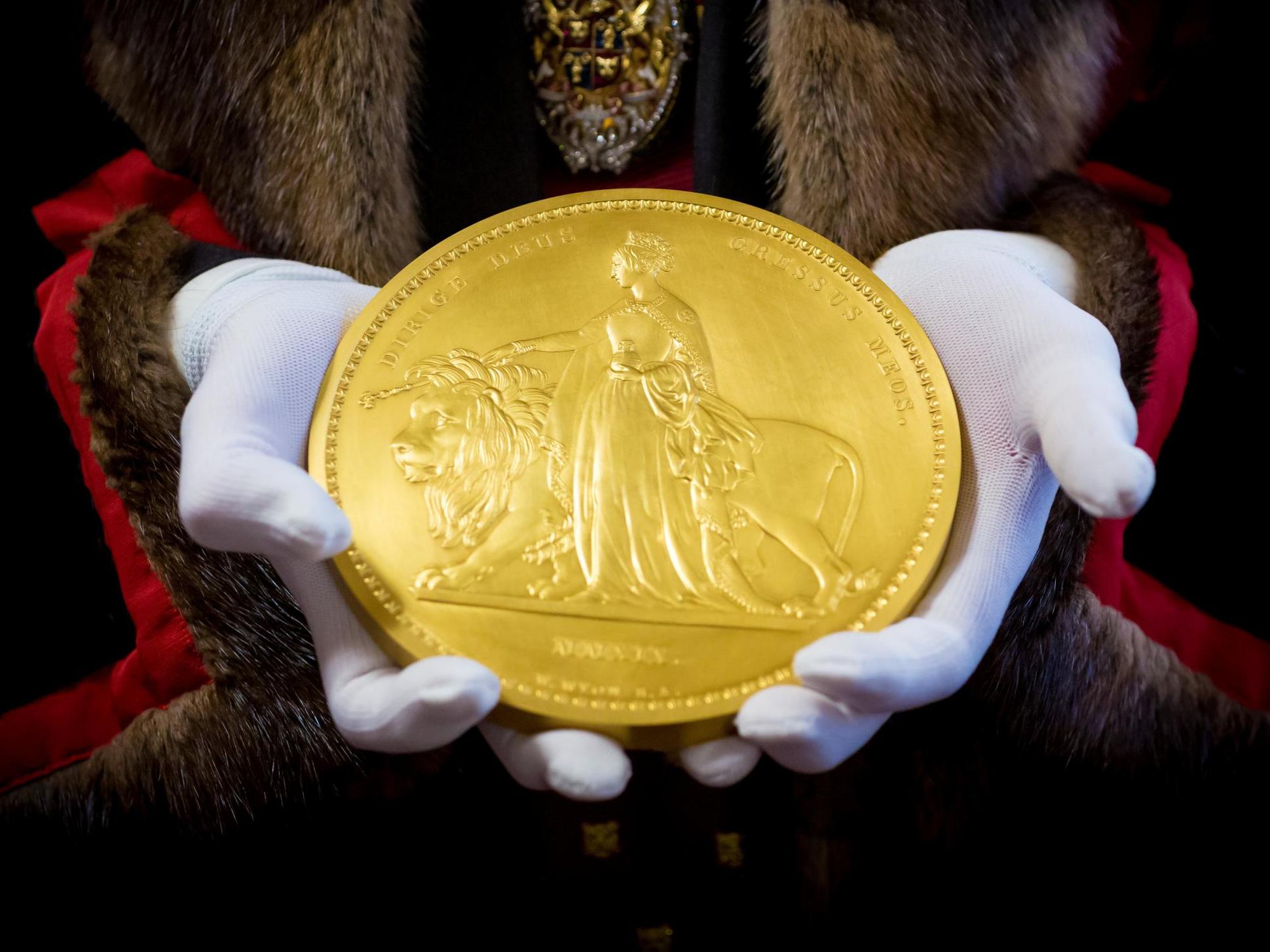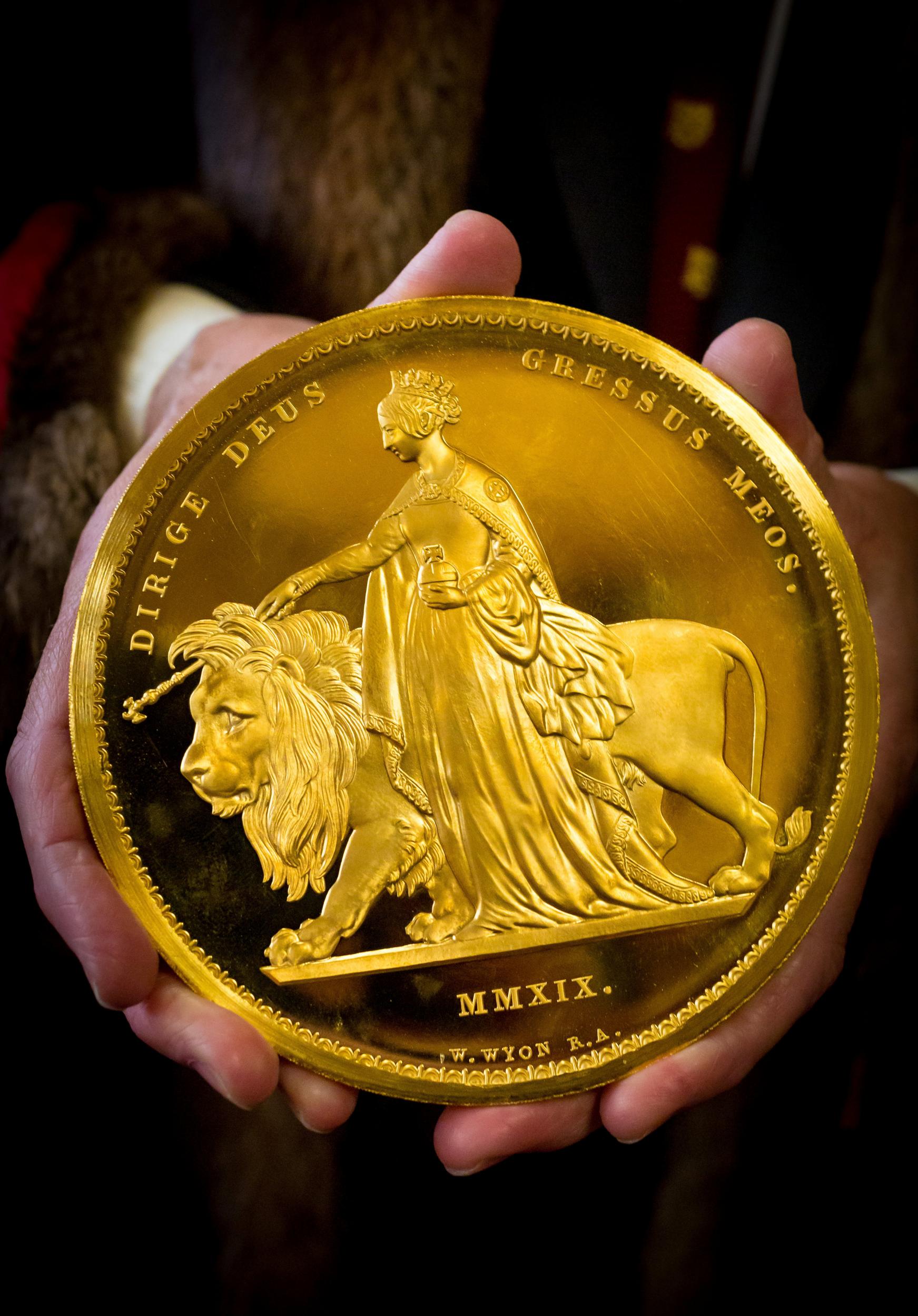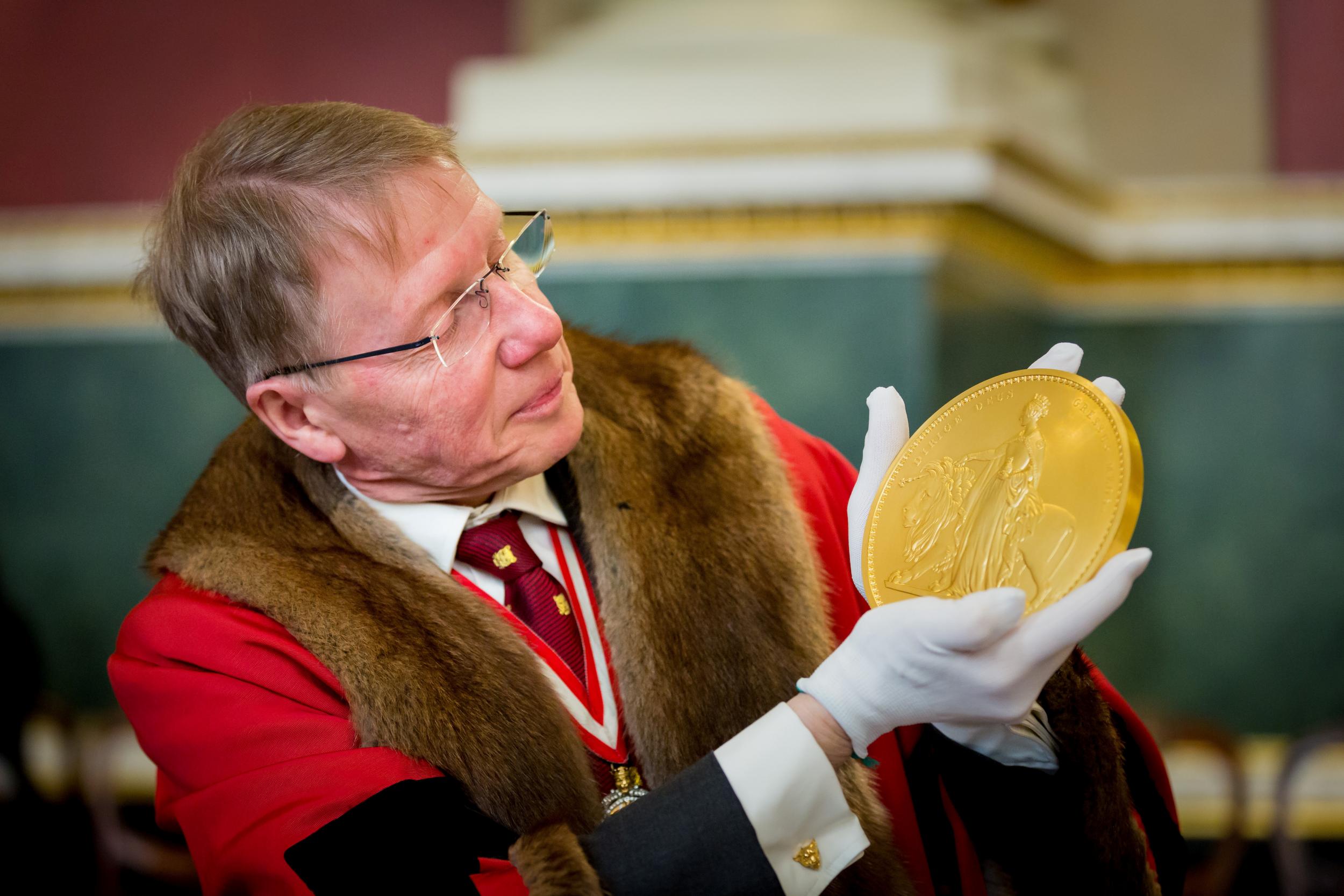Royal Mint makes £5,000 ceremonial gold coin that weighs five kilos
Ornate coin is reportedly worth £300,000

Your support helps us to tell the story
From reproductive rights to climate change to Big Tech, The Independent is on the ground when the story is developing. Whether it's investigating the financials of Elon Musk's pro-Trump PAC or producing our latest documentary, 'The A Word', which shines a light on the American women fighting for reproductive rights, we know how important it is to parse out the facts from the messaging.
At such a critical moment in US history, we need reporters on the ground. Your donation allows us to keep sending journalists to speak to both sides of the story.
The Independent is trusted by Americans across the entire political spectrum. And unlike many other quality news outlets, we choose not to lock Americans out of our reporting and analysis with paywalls. We believe quality journalism should be available to everyone, paid for by those who can afford it.
Your support makes all the difference.The Royal Mint has produced a £5,000 coin that weighs a hefty five kilos and is reportedly worth a staggering £300,000.
The ceremonial gold coin has been made to be tested by the Goldsmiths’ Company in the City of London to ensure it is of the highest quality.
The independent quality testing of coins produced by the Royal Mint is called the “Trial of the Pyx”, a procedure that dates back to the late 13th Century.
The £5,000 coin features the “Una and The Lion” design, conceived in 1839 by William Wyon, former official chief engraver at the Royal Mint.
A £2,000 coin weighing two kilos and reportedly worth nearly £120,000 has also been made featuring the same design.

The coins featuring the “Una and the Lion” design are made from 999 fine gold and have been remastered from an original die that was first used almost two centuries ago.
Graeme Smith, Queen’s Assay Master at the Royal Mint, explained the significance of the “Trial of the Pyx” process.
“Every year coins produced by the Royal Mint go to the Trial of the Pyx, a ceremony which tests and confirms the quality and accuracy of each coin and is something which the Royal Mint prides itself on.”
Simon Hutchinson, deputy clerk at The Goldsmiths’ Company, added that the process is “relevant in modern life” as it ensures that “the nation’s coinage is of the right quality and composition”.

“For as long as we place value in coins, the Trial will remain relevant in modern life,” Hutchinson said.
“Our commitment to excellence, integrity and the accuracy of our testing means we are able to hold the Master of the Mint to account and continue our proud heritage of protecting consumers.”
The “Trial of the Pyx”, which is held at Goldsmiths’ Hall in London, is presided over by the Queen’s Remembrancer, one of the most significant legal representatives in the country.
The Queen’s Remembrancer is assisted by an independent jury from the Goldsmiths’ Company.
The £5,000 and £2,000 coins have been created as part of a new Great Engravers series, which celebrates the most influential artists who have contributed towards coinage in Britain, beginning with Wyon and his “Una and the Lion” design.
Four £5,000 coins have been made, three of which have been sent to the Goldsmiths’ Company to be tested.
The company will drill into the coins and extract samples from each to analyse their composition before melting them down.
The remaining five-kilo coin and the two-kilo coin have been sold to private buyers.
Join our commenting forum
Join thought-provoking conversations, follow other Independent readers and see their replies
Comments